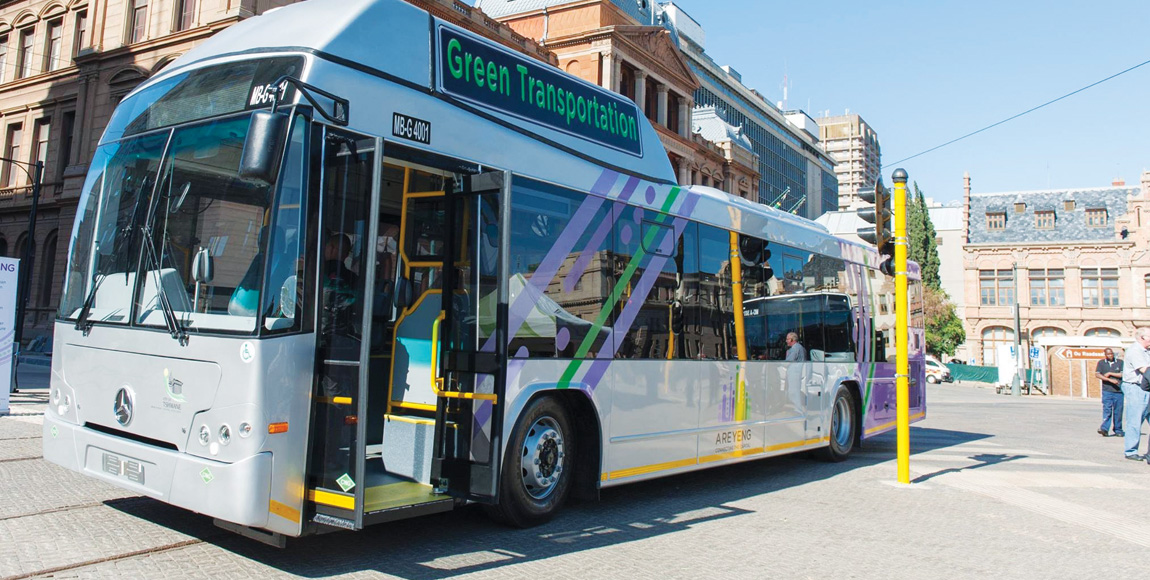In a state of delay…

The implementation of Integrated Public Transport Networks (IPTNs) in South Africa has proved difficult for most of the 13 cities that embarked on the process back in 2007. Mikhail Manuel and Roger Behrens from the Centre for Transport Studies, University of Cape Town, studied three systems to try find out why
In their study: Success and delay in IPTN projects: case study analysis of three South African cities, the authors looked at the IPTN systems in the cities of George, Nelson Mandela Bay and Tshwane – three of the five cities (of the original 13) that have managed to install service operations.
“A decade after the 2007 Public Transport Strategy and Action Plan (PTSAP), it is now apparent that its milestones towards the objective of replacing minibus-taxi services with scheduled city-wide bus rapid transit (BRT) networks have not, and will not, be achieved,” comment the authors.
“At the end of 2017, all three IPTNs [examined herein] were experiencing lower than expected operational performance, higher than expected infrastructural cost, longer than expected implementation timelines and higher than expected industry transformation costs. Case study analysis indicates that these outcomes have been the product of a range of underlying factors, most dominant of which have been institutional in nature,” they add.
This is a summary of what was revealed:
GoGeorge IPTN (George)
“Prior to 2007, the GoGeorge project presented itself as a cost-effective public transport solution that brought together different spheres of government and the paratransit industry, to achieve the goals of national government with minimal assistance needed from the fiscus. It appeared to be a truly transformational project in multiple spheres,” the authors say about the George system.
However, the system launched almost three years later than intended and has failed to reach its predicted passenger trips per day (51 628 predicted versus 12 400 actual in 2016/17), as well as its predicted annual fare revenue (R120,5 million predicted versus R37,3 million actual in 2016/17).
In their analysis, it was found that GoGeorge fell short on only two of its design criteria: it had not provided access to 85 percent of the urban built environment, because its fourth phase is yet to be launched, nor had it implemented electronic fare payment.
“A series of key events caused the delay in the GIPTN,” it is noted. “First, a taxi-industry compensation precedent was set by other cities that were implementing the 2007 PTSAP, which diverted attention to the major cities in preparation for the 2010 World Cup. This changed the course of the GIPTN project and, between 2007 and 2011, progress on the GIPTN slowed. When the project started again, conditions had changed completely.
“Second, as a result of the increased industry transformation costs, the George local municipality sourced financial support from the National Department of Transport (NDoT) and National Treasury, which came with two conditions that caused both time delays and cost escalations. The fleet ownership conditions delayed negotiations, which, in turn, delayed the launch date. The universal access vehicle conditions increased both the capital and operations cost.”
Libhongolethu IPTN (Nelson Mandela Bay)
“The Libhongolethu IPTN had a promising start in 2007, however it quickly unravelled through a gradual breakdown of trust and the relationship between the minibus-taxi industry and the Nelson Mandela Bay Municipality,” comment the authors. The result was that, by the end of 2017, only the system’s 2013 pilot-phase operations had been run.
The pilot was launched more than two years later than intended and the services were terminated after ten months. No bus has run since the conclusion of the pilot phase.
“It is posited that the IPTN project is delayed because of a lack of capacity within the municipality to sufficiently prevent corrupt practices from infiltrating municipality processes. This proposition is found on the basis of the many allegations of corruption coming from different sources,” they continue.
The authors note a particular success of the Libhongolethu IPTN being the fact that the minibus-taxi industry was able to unite under one body (Laph’umilanga, a secondary cooperative, which was mandated to negotiate with government on behalf of the taxi industry) and operate formal services, with some assistance, during the World Cup.
The intention was to negotiate during the World Cup for the post-World Cup IPTS operations, but, by July 2010, the negotiations had not taken place. As a result, the buses were parked in Motherwell, a suburb on the outskirts of the city, where they have been gathering dust ever since.
Further sources of failure include unfulfilled promises of payment, allegations of funding misappropriation, and a subsequent court case and vetting requirements.
“Ultimately, these events demonstrate a lack of trust and relationship, which are essential elements in any negotiation,” the authors note.

A Re Yeng IPTN (Tshwane)
Phase 1A, the only operational phase of A Re Yeng at the time of the study, was launched in November 2014, eight months late. Phase 1 is yet to be implemented in its entirety. The system is not meeting its predicted daily passenger trips (127 000 predicted versus 4 500 actual in 2016/17) nor its annual fare revenue (R254 million predicted versus R5,952 million actual in 2016/17).
“The A Re Yeng IPTN seemed to be plagued by planning woes from its inception in 2010,” note the authors. As the project unfolded, various issues caused numerous delays. These included concerns raised by the NDoT about the original 2009 Operational Plan, which delayed the project by two years, and a 2012 decision to change the Hatfield complementary loop into a Hatfield-CBD trunk route, again due to NDoT concerns.
“The decision to adapt the original plan to run Line 2A (between Hatfield and the CBD) in Phase 1 was made in-lieu of national government concerns over progress. This adaption lead to higher than expected infrastructure costs and lower than expected system ridership, which increased the industry transition costs.
“The opposition to the initial Line 2B infrastructural plan in the public participation process continued to contribute to the delays at the end of 2017. Therefore, it is posited that a contributing factor to the delay of the A Re Yeng IPTN is the lack of capacity within the City of Tshwane to make planning decisions that are cognisant of complex long-term implications,” the authors note.
Conclusion
“The objectives of the 2007 Public Transport Strategy and Action Plan have not been achieved in full. The minibus-taxi industries in all three cases had been partially transformed, while none of the IPTN systems were implemented within their initial timelines. None of the IPTN systems achieved all their design criteria,” the authors comment.
“Collectively, the three case studies point to capacity constraints within government.
“The key to the success or delay of a comprehensive reform project is government’s capacity to both develop project plans that are appropriate for the context as well as its capacity to implement these plans,” they conclude.
Published by
Focus on Transport
focusmagsa



